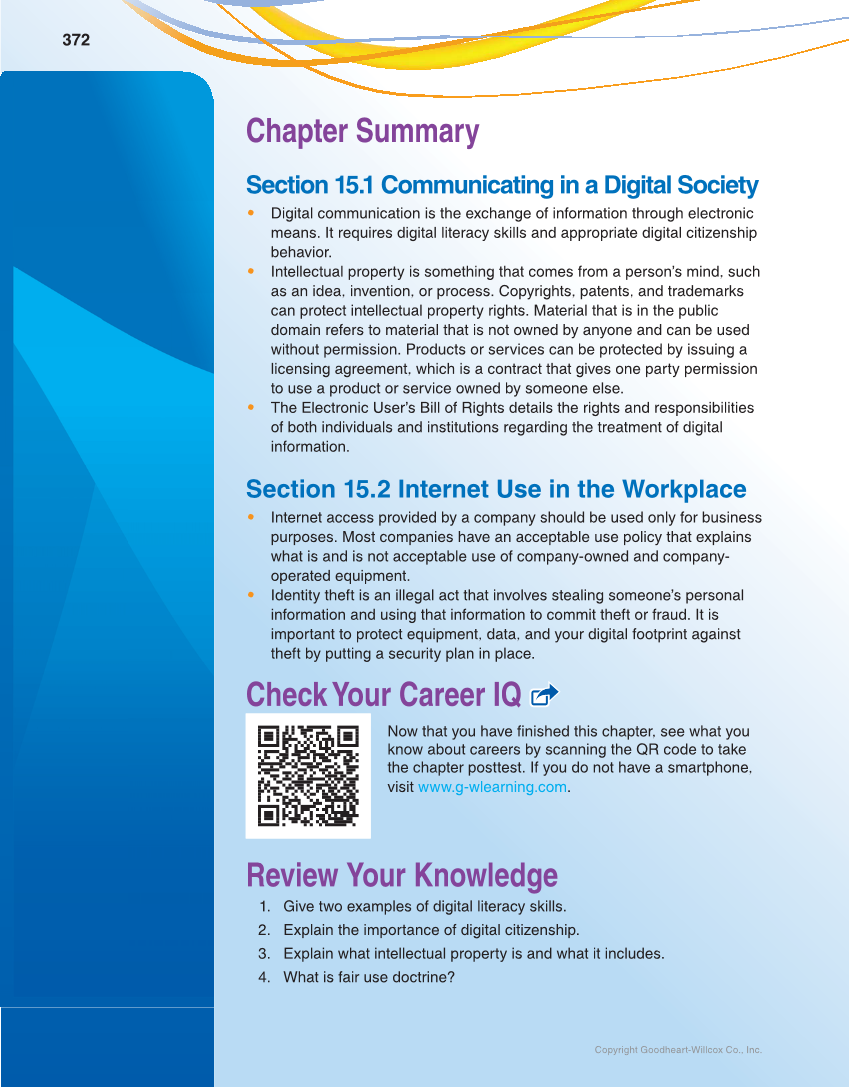Copyright Goodheart-Willcox Co., Inc. 372 Chapter Summary Section 15.1 Communicating in a Digital Society • Digital communication is the exchange of information through electronic means. It requires digital literacy skills and appropriate digital citizenship behavior. • Intellectual property is something that comes from a person’s mind, such as an idea, invention, or process. Copyrights, patents, and trademarks can protect intellectual property rights. Material that is in the public domain refers to material that is not owned by anyone and can be used without permission. Products or services can be protected by issuing a licensing agreement, which is a contract that gives one party permission to use a product or service owned by someone else. • The Electronic User’s Bill of Rights details the rights and responsibilities of both individuals and institutions regarding the treatment of digital information. Section 15.2 Internet Use in the Workplace • Internet access provided by a company should be used only for business purposes. Most companies have an acceptable use policy that explains what is and is not acceptable use of company-owned and company- operated equipment. • Identity theft is an illegal act that involves stealing someone’s personal information and using that information to commit theft or fraud. It is important to protect equipment, data, and your digital footprint against theft by putting a security plan in place. Check Your Career IQ Now that you have fi nished this chapter, see what you know about careers by scanning the QR code to take the chapter posttest. If you do not have a smartphone, visit www.g-wlearning.com. Review Your Knowledge 1. Give two examples of digital literacy skills. 2. Explain the importance of digital citizenship. 3. Explain what intellectual property is and what it includes. 4. What is fair use doctrine?
